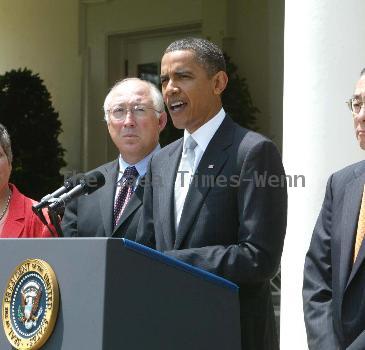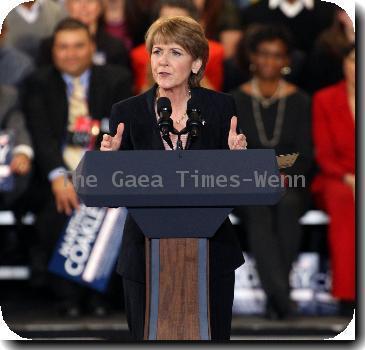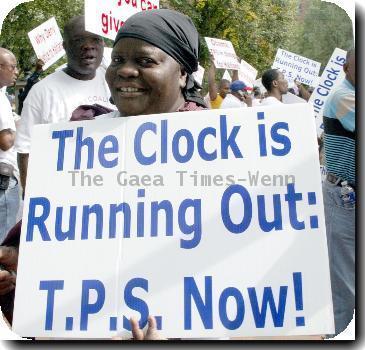First Obama climate report to UN projects 4 percent emissions rise by 2012
By APTuesday, June 1, 2010
US projects 4 percent emissions rise by 2012 to UN
UNITED NATIONS — In its first major climate report to the United Nations in four years, the United States projected Tuesday that its climate-warming greenhouse gases will grow by 4 percent through 2020.
The first such report submitted under the Obama administration includes a 1.5 percent rise in carbon dioxide emissions, the main gas from fossil fuel burning blamed for global warming. And CO2 from fossil fuel burning still accounts for about four-fifths of all U.S. global warming gases.
But it’s the culpability of hydrofluorocarbons, or HFCs — promoted worldwide to replace chemicals that harm the globe’s ozone layer — that gets a starring role.
Though HFCs account for only about 2 percent of the globe’s climate-warming gases, their share is expected to grow by up to a third of all greenhouse gases by mid-century.
That’s mainly because of their promotion under the Montreal Protocol, the 1987 accord aimed at fixing the huge, seasonal hole in the stratospheric ozone layer over Antarctica.
“A large portion of emissions growth is driven by HFCs, which are projected to more than double between 2005 and 2020, as they are more extensively used as a substitute for ozone-depleting substances,” the report submitted to the United Nations by the U.S. State Department says.
Overall, U.S. warming gases rose 17 percent from 1990 through 2007; the U.S. accounts for about a fifth of all emissions worldwide, behind only China.
By contrast, some 37 industrial nations have been modestly cutting back on emissions of greenhouse gases from 1990 levels under the 13-year-old Kyoto Protocol that the U.S. rejected.
In the report, President Barack Obama’s administration also renews its post-Copenhagen climate summit vow that industrialized nations’ “fast-start effort” will begin this year to help developing countries deal with rising sea levels, drought and other effects of rising temperatures.
The administration says it will be “contributing its share to developed country financing approaching $30 billion for 2010-2012,” which is about three times what the U.S. contributed in 2009, the report says.
The $30 billion fund, scaling up to $100 billion a year by 2020, was a key element of the deal brokered by Obama with the leaders of China and other major developing countries at the 193-nation climate summit in the Danish capital last December.
In the report, the U.S. says it will join with other donors to “channel $3.5 billion” including $1 billion in U.S. funding for preserving forests, caring for lands and other programs through 2012.
And the Obama administration says its budget would provide more than $2 billion for climate research, about 3 percent above last year’s spending.
The fifth U.S. summary of climate change action, a nearly 200-page report, updates the previous submission to the United Nations in 2006 under the George W. Bush administration.
That previous report’s policies had been roundly criticized by environmentalists for their emphasis on research and development and lack of concrete measures to reduce emissions growth.
With U.S. Congress still deadlocked on climate legislation, the report notes much of the action is occurring at state and local levels. Obama also has ordered new tailpipe standards and other federal steps that do not require congressional approval.
Virtually all the world’s nations are required to submit summary reports every three to five years to the United Nations Framework Convention on Climate Change, which the United States ratified in 1992. The first three U.S. reports were in 1994, 1997 and 2002.
But in recent years there have been growing concerns the parallel-track Montreal Protocol signed by 195 nations could do more to address global warming.
The ozone treaty, widely viewed as one of the most successful environmental treaties ever, created most of the market for HFCs and essentially eliminated the use of chlorofluorocarbons, or CFCs, blamed for damaging the ozone layer.
Because they do not affect the ozone layer, HFCs broadly replaced CFCs as coolants in refrigerators, air conditioners, fire extinguishers, aerosol sprays, medical devices and semiconductors.
“Unless they are eliminated, HFCs and fluorinated gases will sabotage efforts to combat global warming,” said Samuel LaBudde, atmospheric campaign director for the Environmental Investigation Agency, a nonprofit watchdog group in Washington.
“We could and should use the Montreal Protocol to phase them out, just as it’s doing for chemicals that threaten to destroy the ozone layer,” he said.
Tags: Air Quality, Barack Obama, Canada, Climate, Copenhagen, Denmark, Environmental Concerns, Environmental Policy, Europe, International Agreements, Montreal, North America, Quebec, Summits, United Nations, United States, Western Europe





